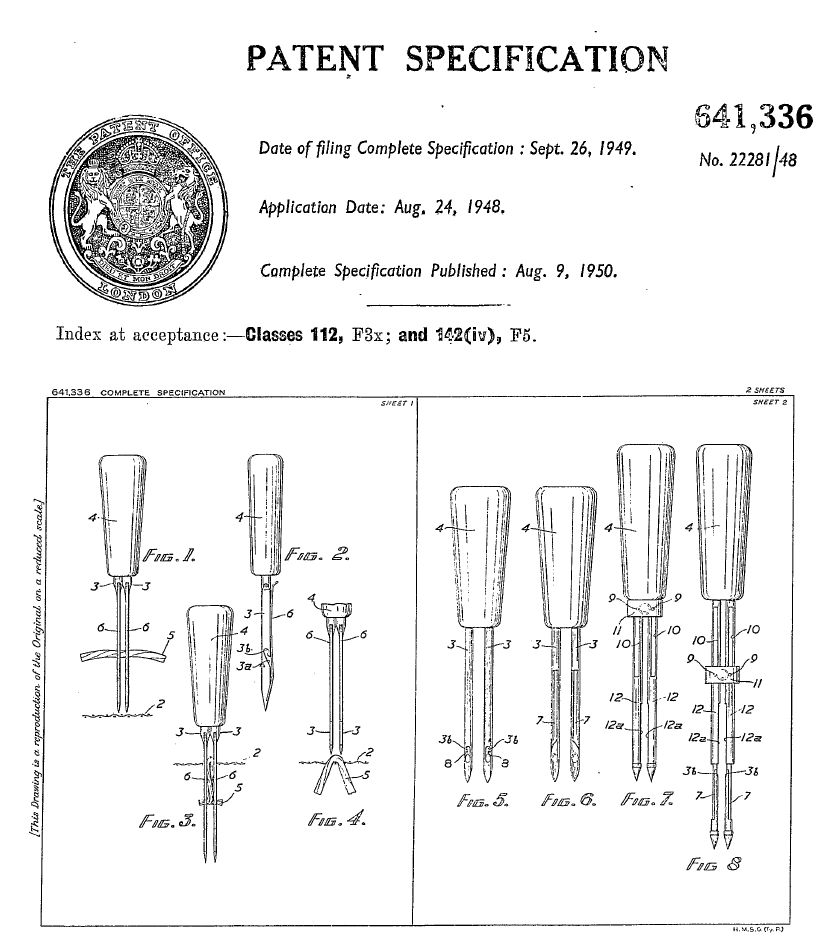
RUG-MAKING HISTORY - THE READICUT RUG PUNCH
In most minds, Readicut is firmly associated with latch-hook rug-making. In 1948, the Readicut Wool Co Ltd, and James Hanson (of Oakville, 301, Oxford Road, Gomersal, near Leeds) applied for a patent for an improved rug-making hand tool. Patent 6419336 was filed in August 1948 and published in August 1950.
The tool described made rugs by “simultaneously inserting the ends of a short length of yarn through a base fabric at adjacent points” while an adhesive (which may be an emulsion or dispersion of rubber latex) was applied to the middle of the length of yarn during insertion, to secure the yarn and provide a friction (non-slip) surface on the underside of the rug.
According to the description, tP>This had the advantage over a traditional rug-punch needle in producing a consistent length pile (using pre-cut yarn) rather than loops that may vary in length. There was also no need to cut the pile, as the tool used pre-cut lengths of yarn instead of a continuous piece of yarn. The problem of securing the yarn would be overcome by the use of adhesive.The device comprised two needles mounted side by side and each having a notch, or open eye, near its point. The middle of the length of yarn was to be laid across the pair of needles, into the notches, and the needles were to be thrust through the base material (canvas etc), one needle either side of a thread of the base material. The middle of the yarn would be stopped when it met the canvas, while the cut ends were driven through to form the pile. This also pulled the yarn out of the notches and the needles could be pulled back out of the base material. The patent stated that the notches could be spring-loaded and made to close as the pushed through the base material. The needles could be straight or offset/curved for ease of use.
In addition, the handle contained a reservoir of adhesive and a small amount would be dispensed each time the yarn was pushed fully through the rug backing, e.g. by means of a plunger.
